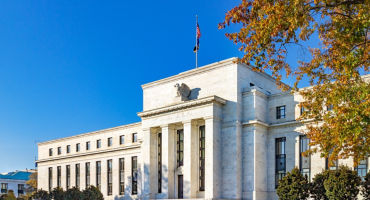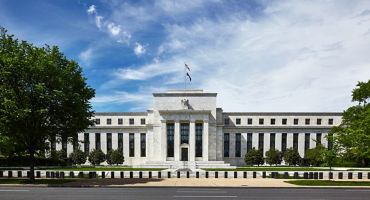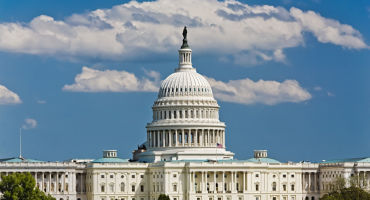The US presidential election in November 2024 will carry monumental implications from economic, fiscal, institutional, and societal perspectives. This note will focus on the economy, for which the election outcome could materially alter the current trajectory. While too early to have a significant degree of confidence in the outcome, a Republican sweep (Presidency, House, Senate) would represent a seismic event for the bond market given the combination of increased probability of higher cost-push inflation through an acceleration in protectionist policies (higher tariffs and immigration restrictions) and a large fiscal easing relative to current Congressional Budget Office (CBO) forecasts.
Stark contrast in policy proposals from a supply side economics point of view
At a high level, an improvement in the supply side of the economy is a more positive outcome for the growth and inflation tradeoff, while a negative supply shock worsens that relationship. The period from 2020–2022 represented deteriorating supply conditions, while the last year has been categorized by an improving supply side (through higher immigration and a pickup in productivity growth). Part of my structural inflation research — which shows a higher average inflation rate and more volatility around that trend over time — is based on a deteriorating medium-term labor supply backdrop. This in turn makes wages more volatile, and further supply constraints in tradable goods leads to goods prices being more sensitive to demand.
While my bias is that these conditions are sustained over the medium term regardless of the election outcome, the trend could accelerate depending on the result. Trump’s policy proposals would represent a material negative supply shock — tariffs have the potential to reduce the global supply of tradable goods and restrictive immigration limits available workers — increasing the probability of more sustained medium-term inflation. Immigration policy differences will be increasingly important for the relative supply side and growth inflation tradeoff.
Notable labor policy differences between Trump and Biden
Details of Trump’s various policy proposals are somewhat light at this stage, and obviously subject to implementation risks. That said, there are clear signals that tariffs and more significant immigration restrictions and deportations are likely under another Trump term. Importantly, some of these policies do not require Congressional approval. There are three sources for Trump policy proposals: his campaign, the America First Institute, and the Heritage Foundation Project 2025. I identify some consistencies across all three:
- Move to a merit-based immigration system.
- Increase border security for illegal immigration (and finish building a wall on the southern border with Mexico), possibly utilizing the US Army.
- Deportations of undocumented workers. Various estimates suggest 10–15 million undocumented people currently reside in the US, 95% of whom are working age.
While the Biden campaign has been slow to release specific policy proposals for a prospective second term, there have been a few hints from recent rhetoric as well as policies from earlier in his presidency. Specifically, these include policies designed to increase labor force participation: free preschool for children aged three and four, more significant childcare subsides, and paid parental leave. However, this would likely require full control of Congress, and the Republicans are increasingly expected to control the Senate after the election, although the candidates chosen in various states will matter. In theory, these policies would increase the probability of more sustained increases in prime age labor force participation, therefore reducing the supply-driven medium-term inflation risks.
Structural demographic backdrop likely to prove inflationary
Current estimates show moderating growth in the population and labor force over the next several decades. However, over 70% of the contribution to population growth and the labor force will be due to immigration given the domestic demographic headwinds for the current population. While it is hard to put firm numbers around the implications of potential labor force policies, together Trump’s policies would increase the probability of a smaller contribution from immigration in 2025 through 2028. Much of the structural decline in immigration relative to trend occurred following policy changes and rhetoric in 2017 and did not recover until last year. Trump’s policies would represent a negative labor supply shock, increasing the probability of more significant labor shortages over the next five years and therefore more sustained cost-push inflation pressure.
Clear contrast in trade policy approaches but tariffs aren’t going away
Biden has not campaigned or discussed an increase in tariff rates or trade policy more broadly outside of further tightening technology exports to China. Trump, on the other hand, has signaled a renewed willingness to further increase tariffs. Specifically, he has proposed the following:
- Across the board 10% tariff on imports and increasing tariffs “where appropriate”, and for some select goods by 60%–100%;
- Increase in industrial and agricultural assistance; and
- Better alignment of World Trade Organization (WTO) trade practices OR to create a WTO successor that excludes China.
I find it highly unlikely (and illogical) that Trump would abort the USMCA1, and place tariffs on Canda and Mexico. Assuming the stated policy of 10% tariffs, I calculate a direct cost of around US$300 billion, or 1.1% of GDP, and an increase in total CPI inflation of 0.5%–1.0%. However, this is just in isolation and second round impacts combined with supply chain disruptions could add more. Trade volumes have already been trending lower over the last decade, partly due to a rise in protectionist policies.
An acceleration in this type of policy would A) increase the probability of further cost-push inflation pressure, and B) reduce the probability that productivity increases are sustained — where the prospects otherwise look increasingly strong over the medium term.
In closing
The US election cycle will heat up as November approaches, with the potential for bouts of market volatility to ensue. I intend to publish additional views related to this topic in the coming months.






















